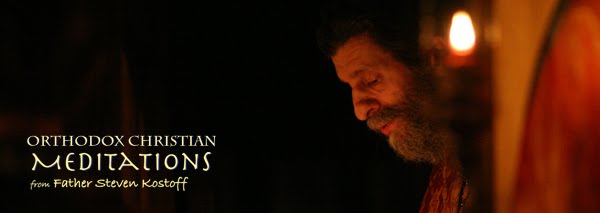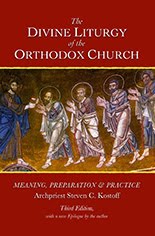Dear Parish Faithful,
CHRIST IS RISEN!
INDEED HE IS RISEN!
I received a letter from Fr. Thomas Hopko earlier in the week and it contains quite a remarkable piece of writing as an attachment. The source of the work is explained below, by Fr. Tom. This is an incredibly powerful “meditation” that I would like to share with all. Here, in a few remarkable paragraphs, is the very essence of the Christian Faith. Hard to imagine it being said any better than this. Please read this carefully and allow yourself some time to reflect upon what you read.
Fr. Steven
* * *
Dying and Behold We Live
Archimandrite Vasileios of Mount Athos
[In 1974 Archimandrite Vasileios (Gondikakis), then the Abbot of Stavronikita Monastery on Mount Athos, and now the retired Abbot of Iviron Monastery, spoke about the monastic life to Orthodox students in Dijon, France. In 1984 St. Vladimir’s Seminary Press published his talk in English as a supplement to the translation of his book Hymn of Entry. In introducing the Abbot’s talk on monasticism Bishop (now Metropolitan) Kallistos of Diokleia noted that although Father Vasileios is writing about monks, what he has to say in many ways applies to all Orthodox Christians. “Thus, at many points in his address,” Bishop Kallistos writes, “where he speaks of the ‘monk’, readers will find it illuminating to substitute in their minds the word ‘Christian’.” In my paraphrase here of sections of this address (whose title comes from St. Paul’s second letter to the Corinthians (See 2 Cor 6:1-10), I will simply use the word “Christian”. I update the language a bit for greater ease in reading.]
The Lord did not come into the world merely to make an improvement in our present conditions of life. Neither did He come to put forward an economic or political system, nor to teach a method of arriving at a psychosomatic equilibrium. He came to conquer death and to bring eternal life: “God so loved the world that He gave His only begotten Son to the end that all who believe in Him should not perish but have eternal life” (John 3:16).
This eternal life is not a promise of happiness beyond space and time. It is not a mere survival after death or a prolongation of our present life. Eternal life is the grace of God which here and now illumines and gives sense to things present and things to come, to both body and soul, to the human person in his or her entirety.
The appearances of the risen Christ to His disciples had as their purpose to fill them with the certainty that death had been vanquished. The Lord is risen. Death has no more dominion over Him (Romans 6:9). He is perfect God who goes in and out, the doors being shut (John 20:19, 26). He is perfect Man who can be touched, who eats and drinks like any one of His disciples.
What makes persons to be truly human and gives them their specific value, are not their physical or intellectual capacities, but the grace of having a share in the resurrection of Christ, of being able, from now on, to live and to die eternal life.
"He who loves his life will lose it, but he who hates his life in this world will keep it unto life eternal" (John 12:25).
True Christians, with the total gift of themselves to God, treasure this one unique truth. They live this one unique joy. He who loses his life in this world, will save it. The life of a Christian, therefore, is a losing and a finding.
Orthodox Christians are persons raised up, sharing in the resurrection of Christ. Their mission is not to affect something by their thoughts or to organize something by their own capacities, but by their lives to bear witness to the conquest of death. And they do this only by burying themselves like a grain of wheat in the earth.
"Truly, truly I say to you, unless a grain of wheat falls into the earth and dies, it remains alone; but if it dies, it bears much fruit. He who loves his life loses it, and he who hates his life in this world will keep it for eternal life" (John 12:24).
The true Christian is one who has been raised from the dead, an image of the risen Christ. He or she shows that the immaterial is not necessarily spiritual, and that the body is not necessarily fleshly. By “spiritual” is meant everything that has been sanctified by the mystery of the Cross and Resurrection of Christ, whether material or immaterial; that is, everything which has been transfigured by God’s uncreated divine energies through Christ and the Holy Spirit.
The true Christian reveals the spiritual mission of what is created and bodily. At the same time she or he reveals the tangible, concrete existence of what is uncreated and immaterial. The true Christian is a person who is totally wedded to this mystery. He or she has the sacred task of celebrating, in the midst of the Orthodox Church, the salvation of all created things.
The true Christians’ purpose in life is not to achieve their individual progress or integration. Their purpose is to serve the whole mystery of salvation, by living not for themselves, but for Him who died and rose again for us, and thereby living for all of their brothers and sisters, and the whole of humanity.
This becomes possible because the true Christian does not live according to his or her own will, but according to the universal, catholic will and tradition of Christ’s holy Church.
Christ is risen! Our eternal joy!










